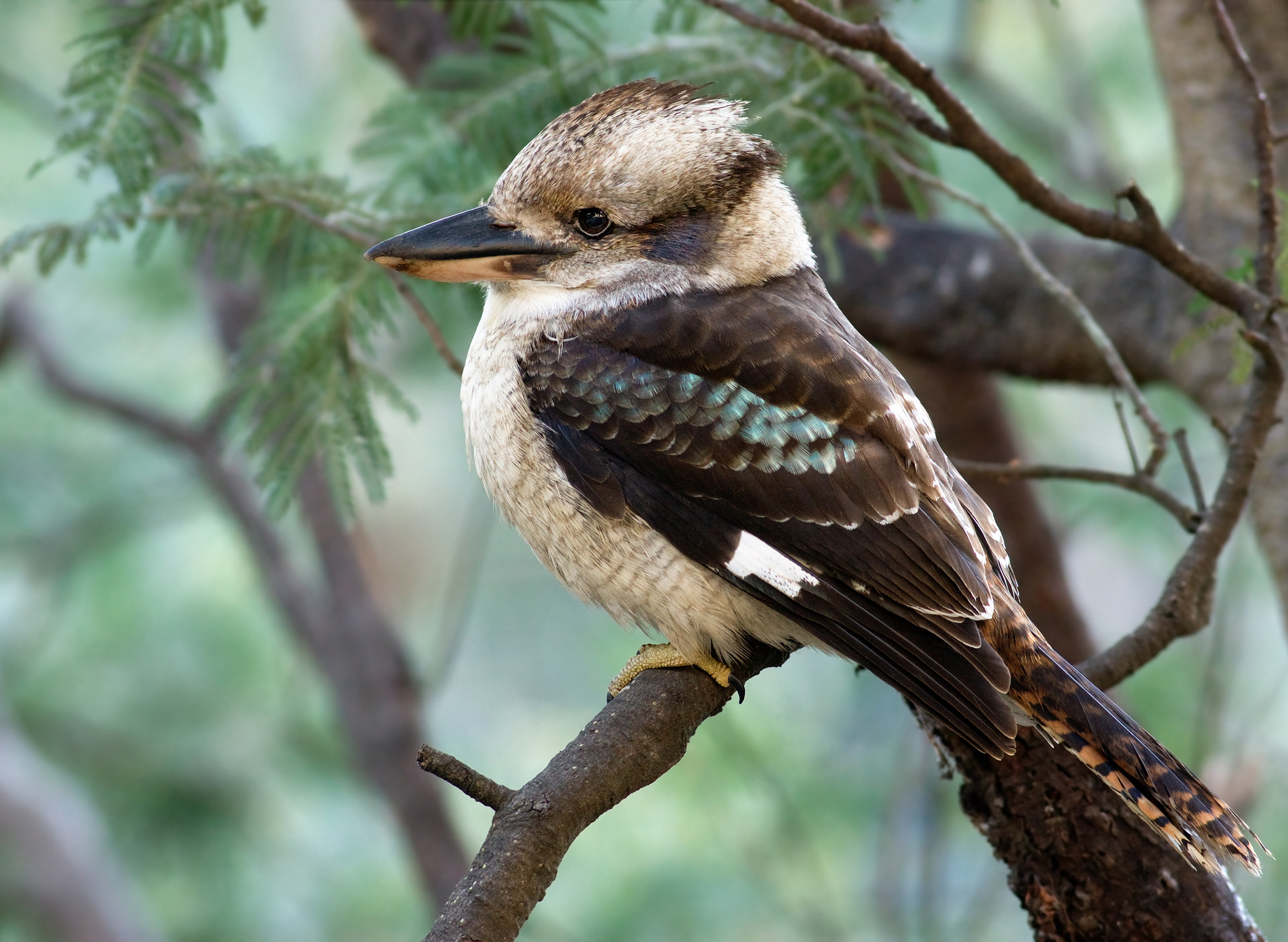Our planet’s forests are crucial sanctuaries for a myriad of diverse species. On this webpage, we present you with a list of various animals residing in the world’s woodlands, complete with images, interesting facts, and additional links for more in-depth information.
Understanding Woodlands
Essentially, a woodland is a land-based ecosystem characterized by a thick proliferation of trees, shrubs, and other plant life. Unlike forests, woodlands have less dense vegetation, smaller trees, and a more open canopy.
Woodlands are scattered across various parts of the world and across different climatic zones such as temperate, boreal, and tropical, each hosting unique assortments of woodland lifeforms.
These environments offer food and shelter to a vast array of animal species. Moreover, they are fundamental in regulating water cycles, maintaining soil health, and preventing soil erosion.
Following is a list of a selection of woodland creatures from different corners of the world. The International Union for Conservation of Nature (IUCN) Redlist conservation status mentioned for each species is accurate as of May 2023.
Woodland Creatures of North America
1. Acorn Woodpecker
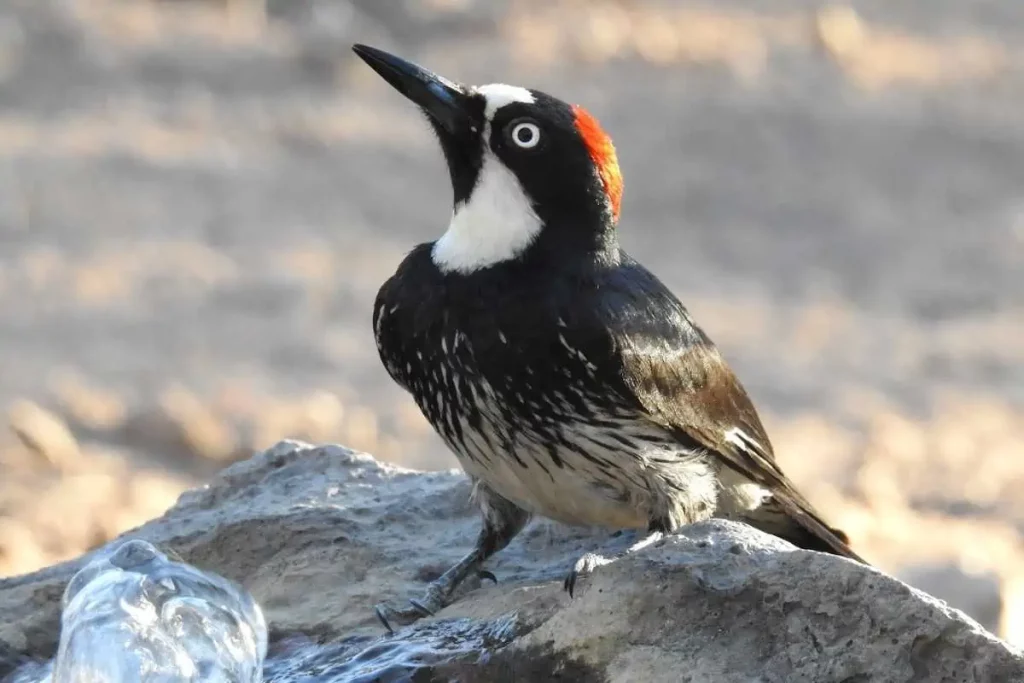
- Scientific name: Melanerpes formicivorus
- Family: Picidae
- Habitat: Western parts of the United States, Mexico, and Central America in oak and pine-oak woodlands
- Conservation status: Least Concern
The Acorn Woodpecker, a medium-sized woodpecker, is recognizable by its vibrant black, white, and red face markings along with a streaked chest. The bird is notorious for its unique habit of storing acorns in self-drilled holes in trees or wooden structures. These “granaries” can hold thousands of acorns and are often used by several generations of the same Acorn Woodpecker family.
Acorn Woodpeckers are highly communal birds, displaying a cooperative breeding system, where multiple members aid in raising the offspring. Their diet primarily consists of acorns but also includes insects, fruits, and nectar.
2. American Black Bear
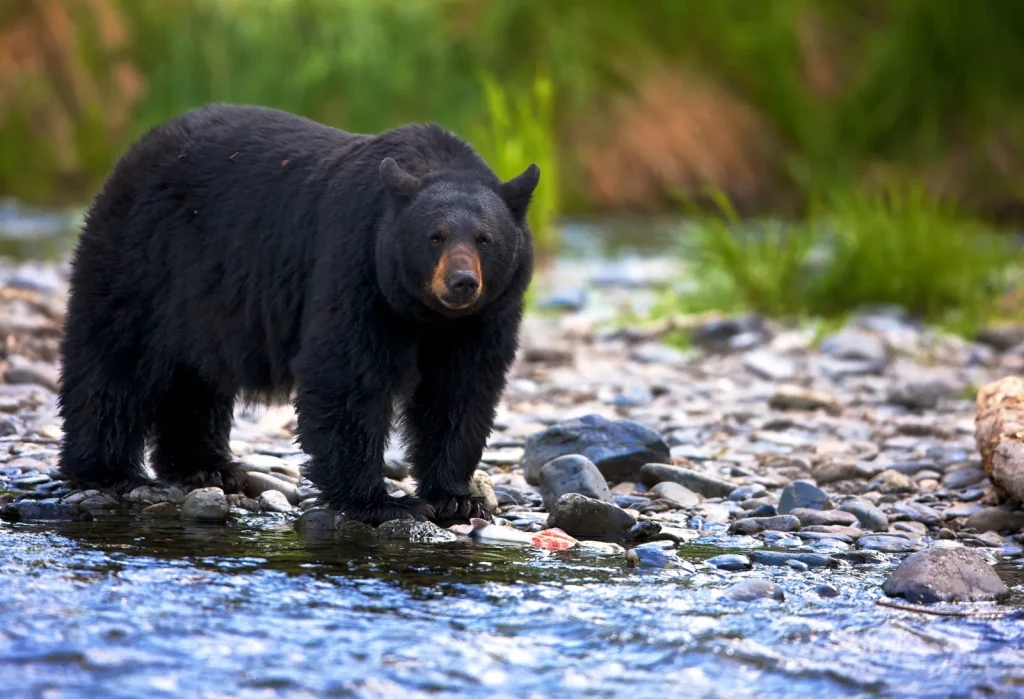
- Scientific name: Ursus americanus
- Family: Ursidae
- Habitat: North America, from Alaska to Mexico
- Conservation status: Least Concern
The American Black Bear is the smallest yet the most widespread bear species in North America. This omnivorous animal has a diverse diet which includes plants, insects, fish, and other mammals.
Sporting sharper claws than its larger counterpart, the brown bear, the black bear is renowned for its remarkable tree-climbing abilities.
3. Eastern Gray Squirrel

- Scientific name: Sciurus carolinensis
- Family: Sciuridae
- Habitat: Eastern parts of North America and some regions in the United Kingdom
- Conservation status: Least Concern
The Eastern Gray Squirrel, a common tree squirrel, is lauded for its agility and adaptability. The animal is primarily herbivorous, subsisting on seeds, nuts, and fruits.
4. Northern Cardinal
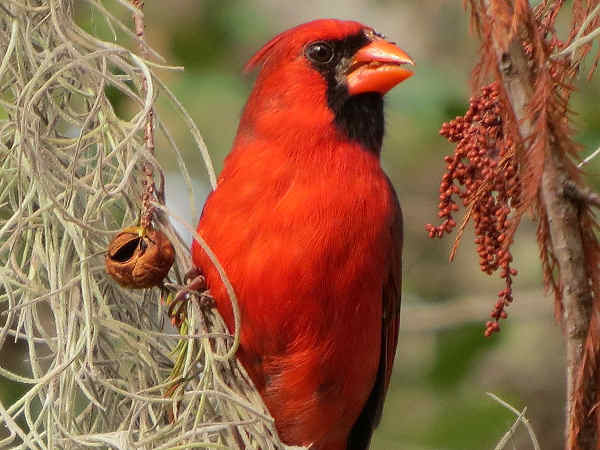
- Scientific name: Cardinalis cardinalis
- Family: Cardinalidae
- Habitat: Eastern and central parts of North America, from Canada to Mexico
- Conservation status: Least Concern
The Northern Cardinal, a medium-sized songbird, is recognized for its vibrant red color (in males) and a distinct crest. Females, on the other hand, are primarily brown with a reddish hue on their wings and tail.
5. Raccoon
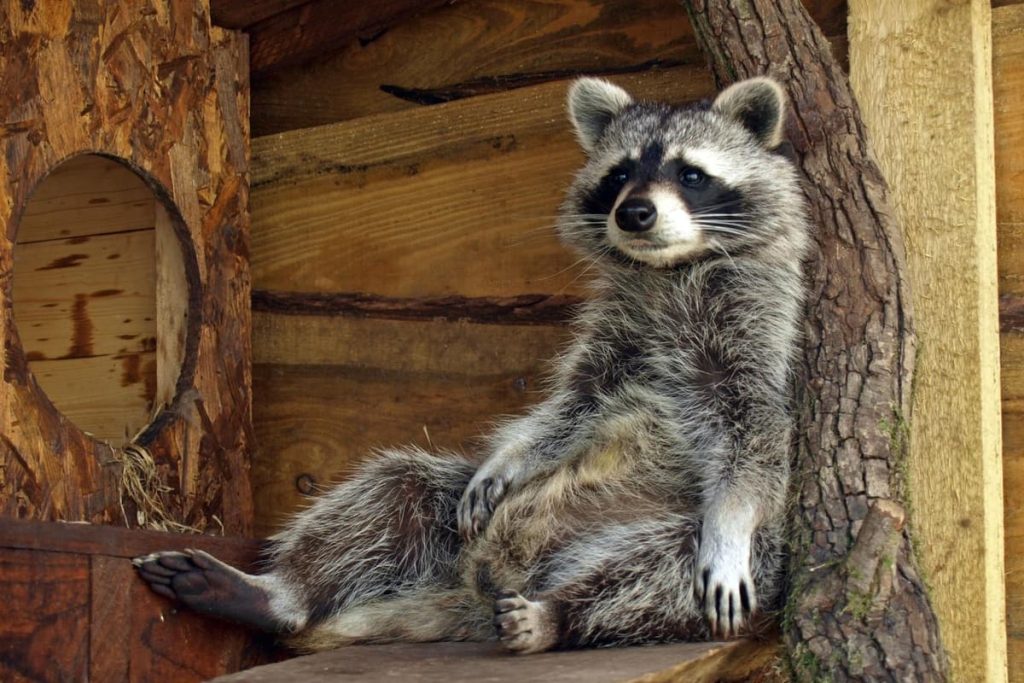
- Scientific name: Procyon lotor
- Family: Procyonidae
- Habitat: North, Central, and parts of South America, spanning a variety of habitats including forests, marshes, and urban areas
- Conservation status: Least Concern
The Raccoon is a medium-sized mammal recognized for its signature black facial mask, bushy ringed tail, and agile front paws. It is an incredibly adaptable creature that thrives in both rural and urban settings.
Raccoons are omnivorous and their diet is varied, comprising fruits, nuts, insects, small mammals, birds, and amphibians. They’re well known for their problem-solving skills and have been observed manipulating objects and opening containers with their front paws. They’re mostly nocturnal creatures, often found near water sources.
While typically solitary, raccoons sometimes gather in small groups for foraging or hibernation during colder months.
6. White-Tailed Deer
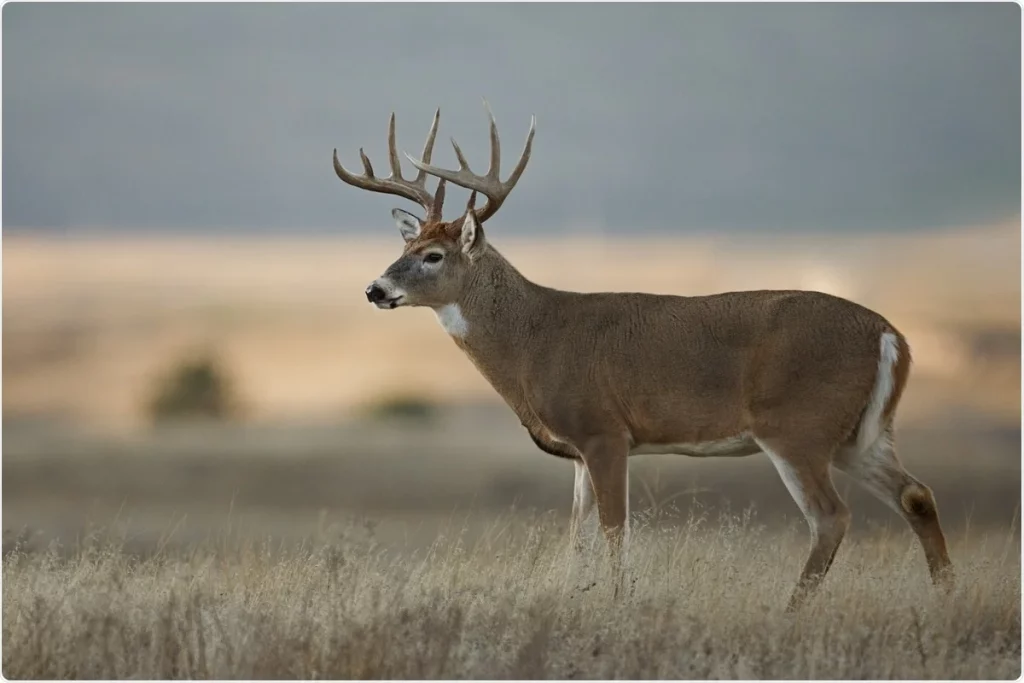
- Scientific name: Odocoileus virginianus
- Family: Cervidae
- Habitat: North, Central, and South America
- Conservation status: Least Concern
The White-tailed Deer is a medium-sized deer species, found widely across the Americas. It is known for its characteristic white tail which it raises as a warning signal when threatened.
White-tailed deer are herbivorous, with a diverse diet that includes leaves, stems, fruits, and nuts.
7. Wild Turkey
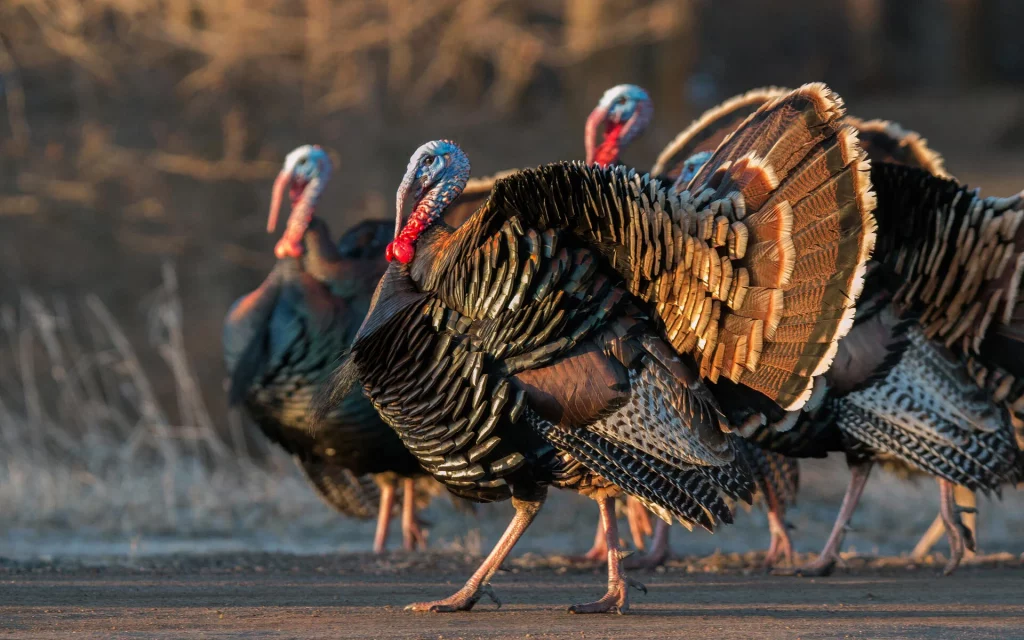
- Scientific name: Meleagris gallopavo
- Family: Phasianidae
- Habitat: North America, from Canada to Mexico
- Conservation status: Least Concern
The Wild Turkey is a large, ground-dwelling bird indigenous to North America. It’s notable for its unique fan-shaped tail and wattled neck.
Wild Turkeys are omnivores, their diet is broad and includes seeds, insects, and small animals. Though primarily ground-dwelling, they are strong fliers, capable of reaching speeds of up to 55 miles per hour over short distances.
C. European Woodland Creatures
1. Eurasian Lynx

- Scientific name: Lynx lynx
- Family: Felidae
- Habitat: Europe and Asia
- Conservation status: Least Concern
The Eurasian Lynx is the biggest of the four lynx species, noted for its muscular physique, short tail, and tufted ears.
This feline is a solitary, elusive hunter, preying mainly on ungulates like deer, but will also feed on smaller mammals and birds.
The Eurasian Lynx is celebrated for its impressive climbing skills, stealth, and agility.
2. European Badger
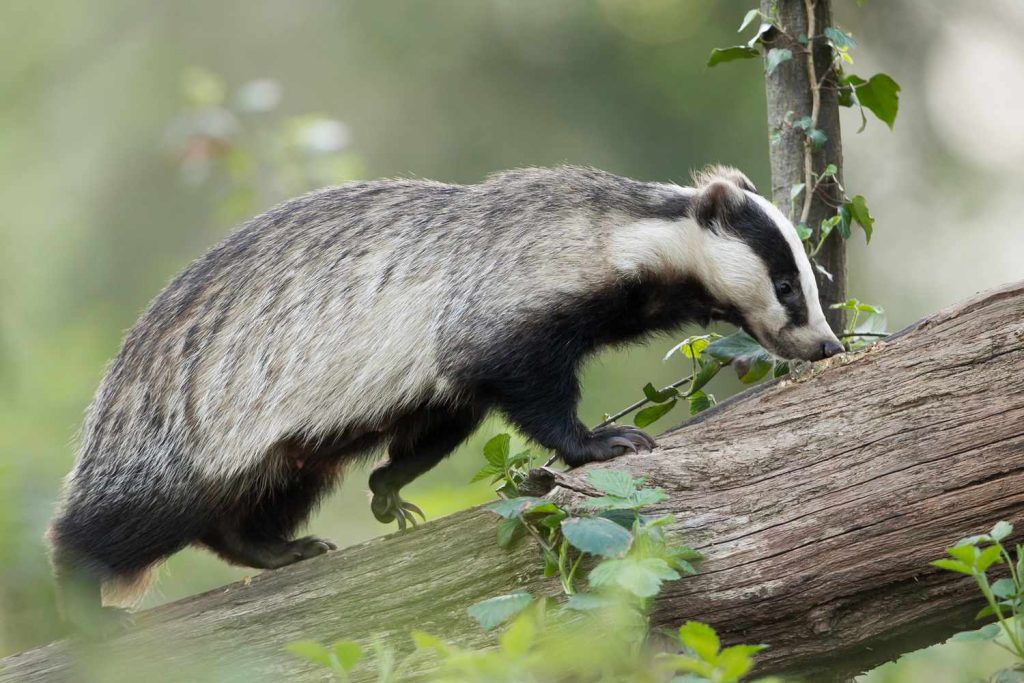
- Scientific name: Meles meles
- Family: Mustelidae
- Habitat: Europe and certain parts of Asia
- Conservation status: Least Concern
The European Badger, one of the most recognized woodland creatures of Europe, is a medium-sized nocturnal mammal known for its robust physique and unique black and white-striped face.
An omnivore, the European badger enjoys a diverse diet including earthworms, insects, fruits, and small mammals.
European Badgers reside in complex burrows known as setts, which they cohabit with other badgers in social groups referred to as clans.
3. European Hedgehog

- Scientific name: Erinaceus europaeus
- Family: Erinaceidae
- Habitat: Western Europe and some parts of Scandinavia
- Conservation status: Least Concern
The European Hedgehog, a small nocturnal mammal, is famous for its distinctive spiky coat. When threatened, it curls up into a ball to shield its vulnerable underbelly.
Primarily insectivorous, European Hedgehogs feed on a range of invertebrates such as beetles, earthworms, and slugs. They also occasionally eat fruits and fungi.
4. European Wild Boar
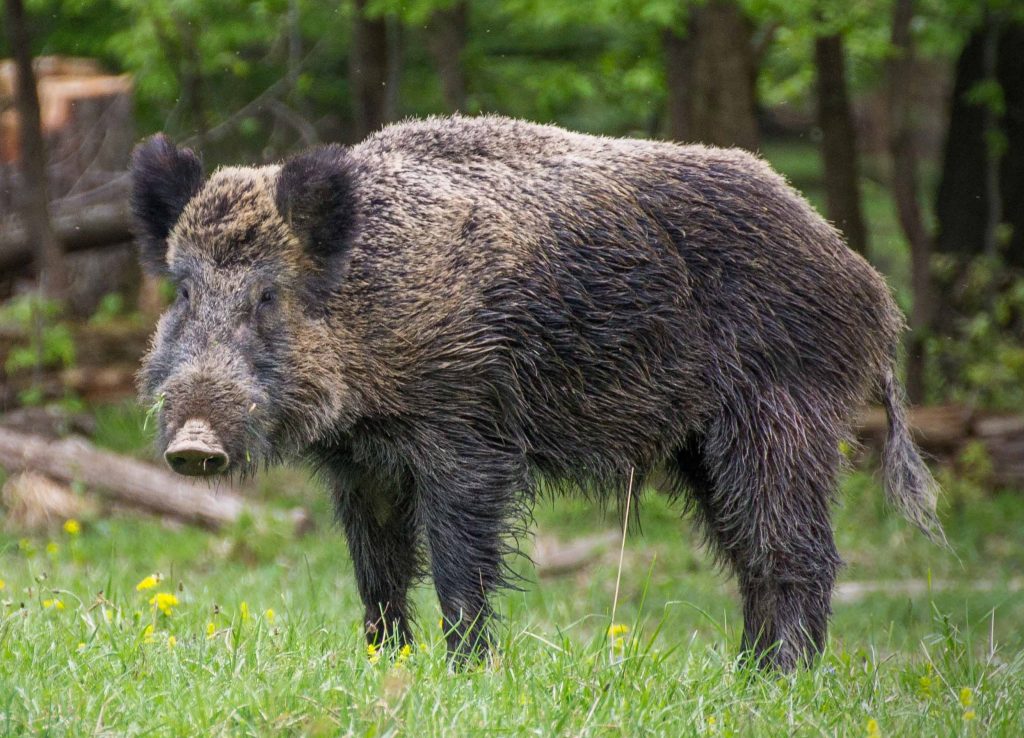
- Scientific name: Sus scrofa
- Family: Suidae
- Habitat: Europe, Asia, and North Africa
- Conservation status: Least Concern
The European Wild Boar, a large and sturdy mammal, is characterized by its dense, bristly coat and in many regions, a unique mane.
This sizable woodland creature, the wild progenitor of domestic pigs, is renowned for its sharp tusks and keen sense of smell.
European Wild Boars are omnivorous, eating a mixed diet of roots, tubers, fruits, small mammals, and carrion. Female and young boars are social and typically live in groups called sounders. Adult males tend to be more solitary.
5. Great Spotted Woodpecker

- Scientific name: Dendrocopos major
- Family: Picidae
- Habitat: Europe and northern Asia, in woodlands, forests, and parks
- Conservation status: Least Concern
The Great Spotted Woodpecker is a medium-sized woodpecker noted for its black and white feathers, with males boasting a distinctive red patch on the back of their necks. Both sexes have a red undertail.
The species uses its powerful beak to drill holes in trees in search of insects and larvae. It is recognized for its drumming behavior, consisting of rapid tapping on tree trunks or branches, used for communication and territory protection.
The Great Spotted Woodpecker’s diet primarily comprises insects, but also includes seeds, nuts, and occasionally the eggs and chicks of other birds.
Great Spotted Woodpeckers are typically solitary, coming together only for mating.
6. Red Fox
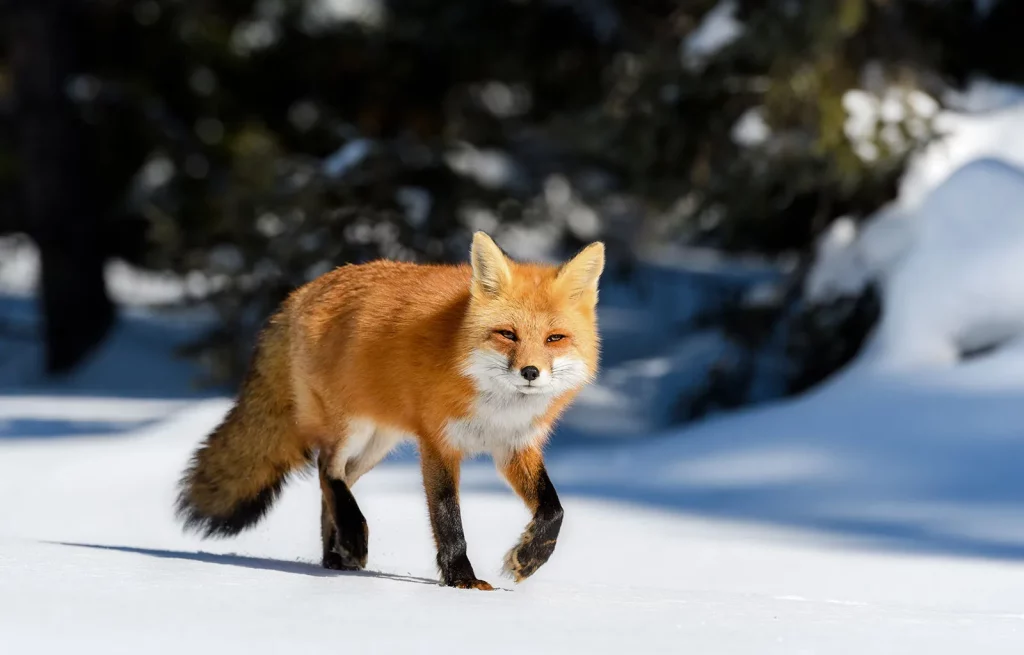
- Scientific name: Vulpes vulpes
- Family: Canidae
- Habitat: Across the Northern Hemisphere, including North America, Europe, Asia, and northern Africa
- Conservation status: Least Concern
The Red Fox is the biggest species within the Vulpes genus (commonly referred to as “true foxes”) and is characterized by its reddish-brown fur, bushy tail, and distinct white tail tip.
A versatile and opportunistic predator, the diet of the red fox includes small mammals, birds, insects, and fruits.
Renowned for their intelligence, resourcefulness, and adaptability, red foxes are woodland creatures that can also be found in various other habitats, including urban areas.
D. African Woodland Creatures
1. African Civet

- Scientific name: Civettictis civetta
- Conservation status: Least Concern
The African Civet, a nocturnal mammal, boasts unique black and white markings and a facial mask resembling that of a raccoon.
This woodland dweller is renowned for producing civetone, a musky secretion used in the perfume industry.
As an omnivore, the African Civet feeds on insects, small mammals, fruits, and carrion.
2. African Forest Elephant
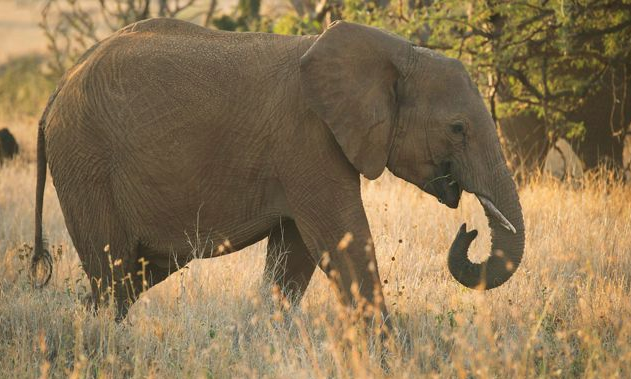
- Scientific name: Loxodonta cyclotis
- Family: Elephantidae
- Habitat: Central and West African rainforests
- Conservation status: Critically Endangered
The African Forest Elephant, one of the two African elephant species (alongside the African bush elephant), is the smallest of the three living elephant species. It resides in forests and woodlands of West Africa.
Feeding primarily on leaves, fruits, and bark, African Forest Elephants play a crucial role in seed dispersal and maintaining the health of their forest environment.
3. African Wild Dog
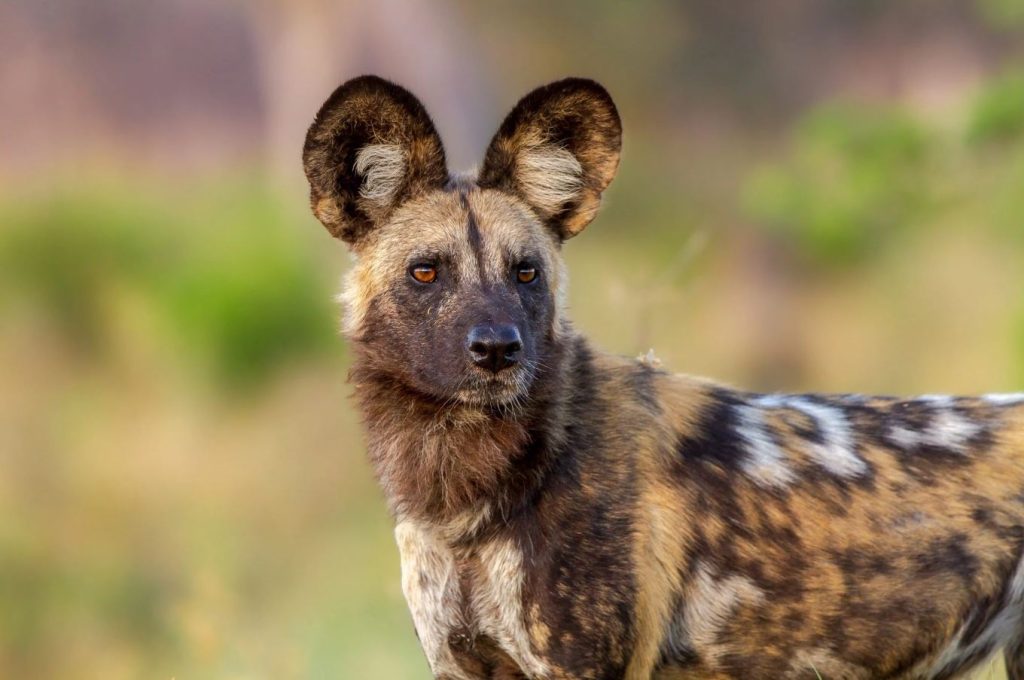
- Scientific name: Lycaon pictus
- Family: Canidae
- Habitat: Sub-Saharan Africa, predominantly in savannas and grasslands
- Conservation status: Endangered
The African Wild Dog, also known as the Painted Dog, is an African canid species with a distinctively patterned coat.
These highly social canids are known to regurgitate food not only for their pups but also for other adult members of their pack.
Living in packs, African Wild Dogs are cooperative hunters, primarily targeting medium-sized ungulates. They exhibit a remarkable hunting success rate compared to other large predators.
4. Chimpanzee

- Scientific name: Pan troglodytes
- Family: Hominidae
- Habitat: Sub-Saharan Africa, found in diverse habitats including tropical forests, savannas, and woodlands
- Conservation status: Endangered
Chimpanzees, intelligent and social primates closely related to humans, possess advanced tool-use abilities, complex vocalizations, and intricate social structures. Their diet encompasses fruits, leaves, insects, and occasionally small mammals. Chimpanzees are also known for their cooperative hunting, often targeting smaller primates like colobus monkeys.
5. Serval
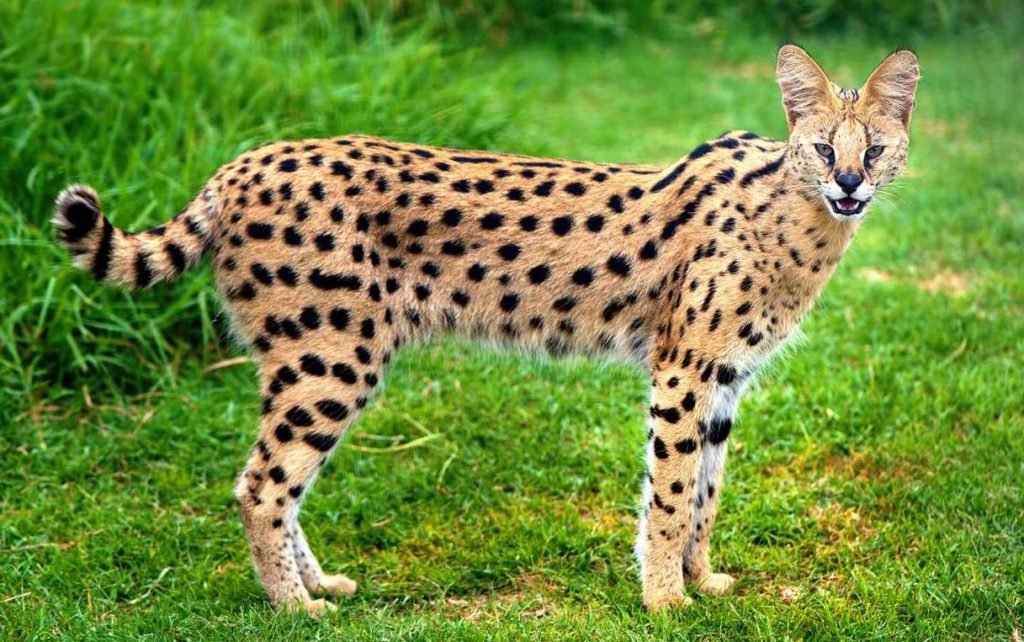
- Scientific name: Leptailurus serval
- Family: Felidae
- Habitat: Africa, particularly in savannas and grasslands near water sources
- Conservation status: Least Concern
The Serval, a medium-sized wild cat, boasts a slender physique, long legs, large ears, and a distinct coat adorned with spots and stripes. These adaptations make the Serval an agile and effective predator, especially in tall grasses.
With a diverse diet primarily composed of rodents, birds, and small mammals, Servals are solitary creatures known for their wide range of vocalizations, including purrs, growls, and high-pitched cries. Their hunting prowess is impressive, utilizing their acute hearing to locate prey and their powerful hind legs to leap and pounce.
E. Asian Woodland Creatures
1. Asiatic Moon Bear
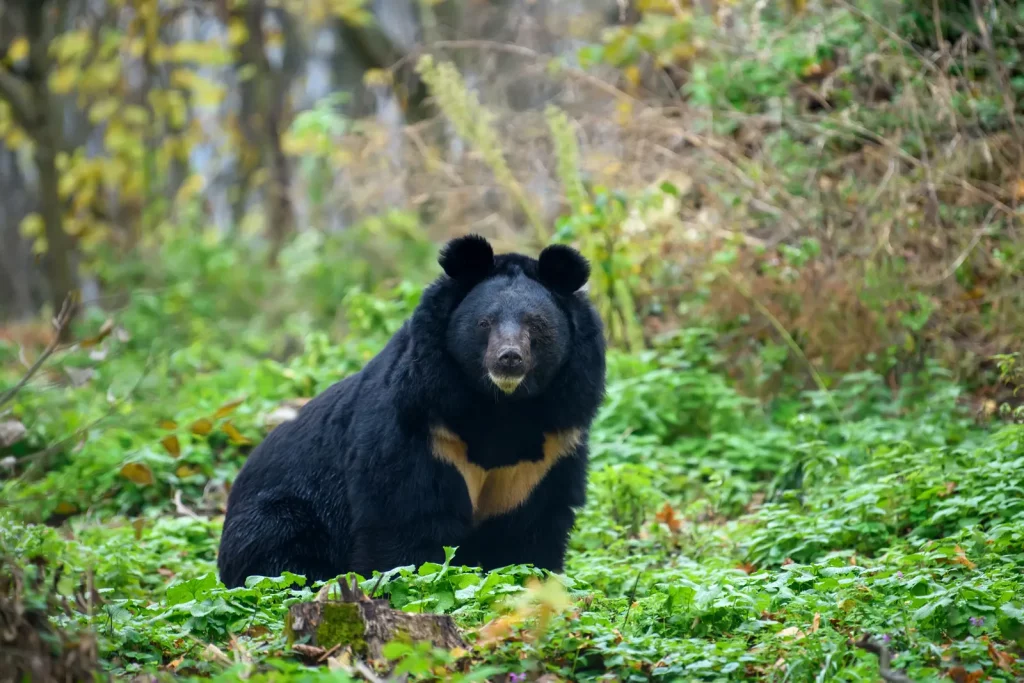
- Scientific name: Ursus thibetanus
- Family: Ursidae
- Habitat: Southeastern Asia, eastern Russia, the Korean Peninsula, and Japan
- Conservation status: Vulnerable
The Asiatic Moon Bear, also known as the Asian Black Bear, is a medium-sized bear species distinguished by a unique white crescent-shaped marking on its chest. This omnivorous bear feeds on fruits, insects, small mammals, and plant material.
With excellent climbing abilities, the Asiatic Moon Bear spends a significant amount of time in trees.
2. Malabar Giant Squirrel
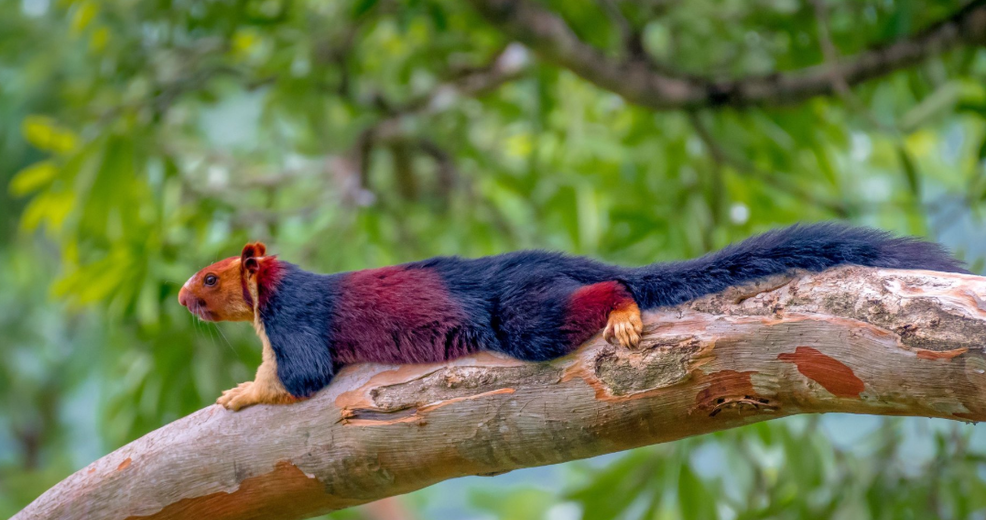
- Scientific name: Ratufa indica
- Family: Sciuridae
- Habitat: India, specifically in deciduous and evergreen forests
- Conservation status: Least Concern
The Malabar Giant Squirrel, also known as the Indian Giant Squirrel, is a large tree squirrel species known for its vibrant coloration, which ranges from red to black.
This woodland creature spends the majority of its life in the forest canopy and is primarily herbivorous, feeding on fruits, nuts, and flowers.
3. Indian Peacock

- Scientific name: Pavo cristatus
- Family: Phasianidae
- Habitat: India, Pakistan, Bangladesh, and Sri Lanka
- Conservation status: Least Concern
The Indian Peacock, commonly referred to as the Peacock, is a sizable and colorful bird species recognized for the extravagant display of the male’s iridescent plumage. The male’s long, fan-like tail feathers are utilized during courtship displays.
Indian Peafowls are omnivores, consuming a diet consisting of seeds, fruits, insects, and small mammals.
4. Japanese Serow
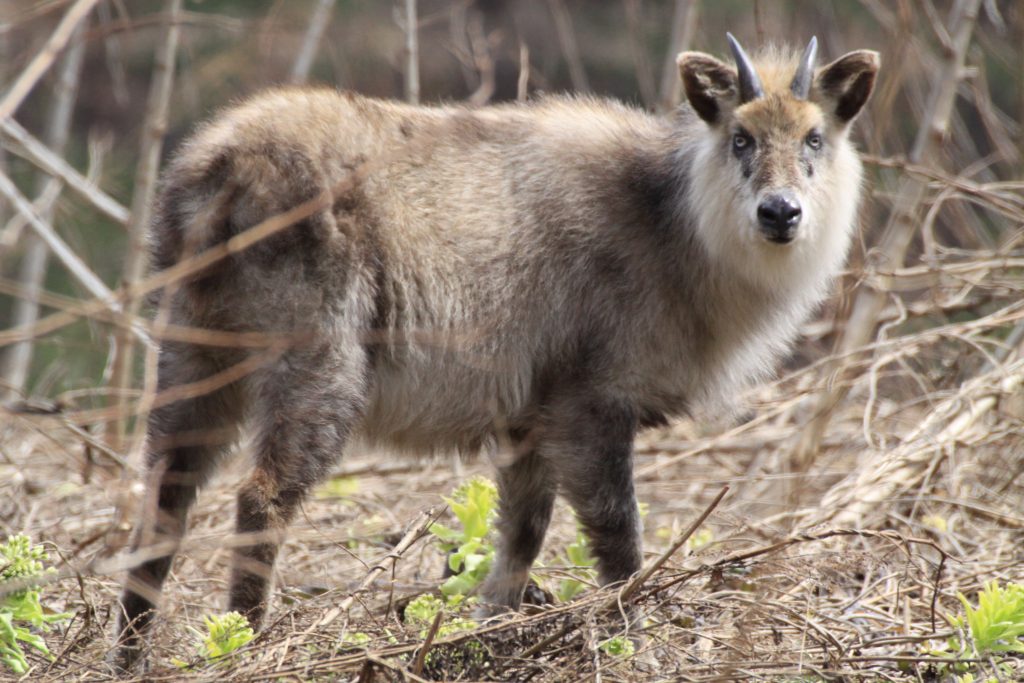
- Scientific name: Capricornis crispus
- Family: Bovidae
- Habitat: Japan, residing in mountainous regions and dense forests
- Conservation status: Least Concern
The Japanese Serow is a small, goat-like ungulate found in the mountainous areas of Japan. It possesses a thick coat that can vary in color from brown to black, and both males and females have short, backward-curving horns.
Feeding on leaves, twigs, and bark from trees and shrubs, Japanese Serows are herbivorous creatures.
5. Leopard
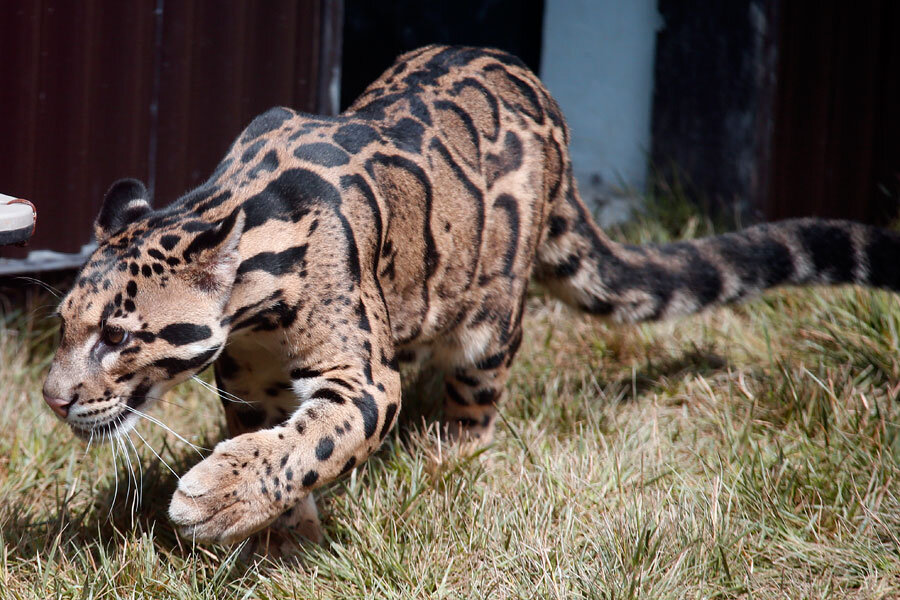
- Scientific name: Panthera pardus
- Family: Felidae
- Habitat: Africa, Asia, and the Middle East
- Conservation status: Vulnerable
The Leopard is a large, elusive cat species distinguished by its rosette-patterned coat and adaptability to various habitats, from woodlands to rainforests.
Leopards are solitary predators, known for their remarkable strength, capable of dragging prey weighing more than their own body weight up into trees.
This carnivorous animal’s diet includes ungulates, primates, and small mammals.
F. Australian Woodland Creatures
1. Australian Brush-tailed Possum
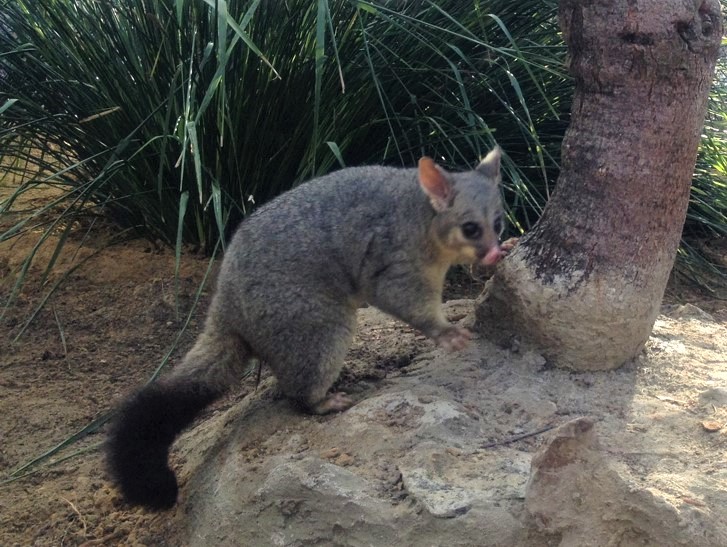
- Scientific name: Trichosurus vulpecula
- Family: Phalangeridae
- Habitat: Australia, Tasmania, and New Zealand
- Conservation status: Least Concern
The Australian Brush-tailed Possum is a nocturnal marsupial with a fluffy tail and a thick, grayish-brown fur coat. It is arboreal and primarily herbivorous, feeding on leaves, fruits, and flowers. Occasionally, it may also consume small insects and birds’ eggs.
Known for their adaptability, Australian Brush-tailed Possums thrive in both urban and rural environments.
2. Eastern Grey Kangaroo
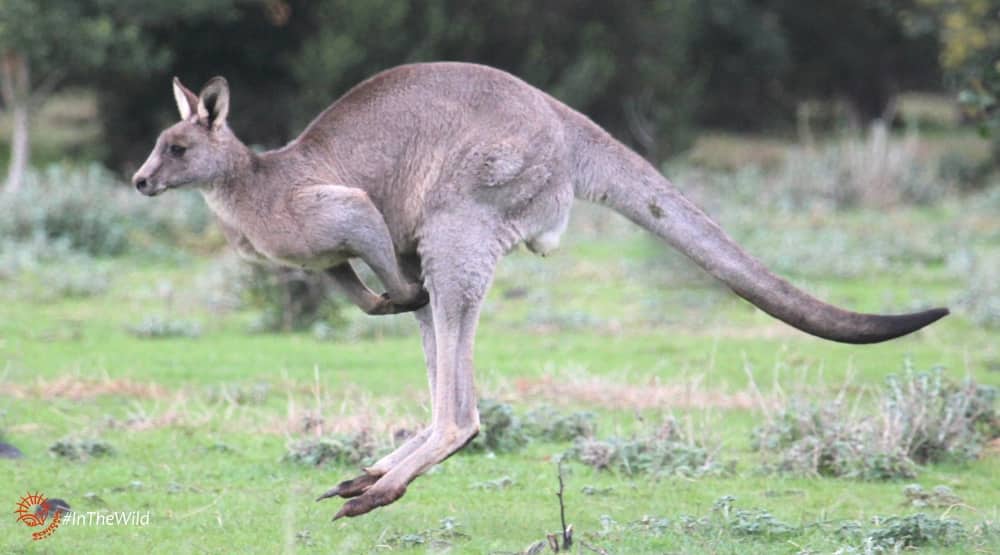
- Scientific name: Macropus giganteus
- Family: Macropodidae
- Habitat: Eastern Australia, in forests, woodlands, and grasslands
- Conservation status: Least Concern
The Eastern Grey Kangaroo is the second-largest living marsupial in the world, with only the red kangaroo surpassing it in size. It is found in woodlands and various other habitats across much of eastern Australia. The species closely resembles the western grey kangaroo.
Utilizing their powerful hind legs, Eastern Grey Kangaroos can reach speeds of up to 64 km/h (40 mph) – the fastest recorded speed of any kangaroo.
These herbivorous creatures primarily graze on grasses. They live in social groups called mobs or troops, which can include several dozen individuals.
Like other kangaroo species, Eastern Grey Kangaroo mothers carry their young, called joeys, in a pouch.
3. Koala
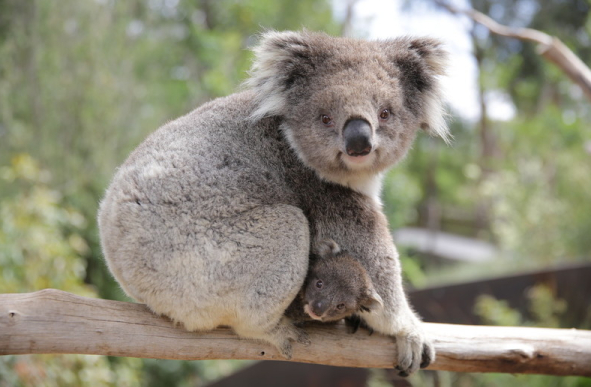
- Scientific name: Phascolarctos cinereus
- Family: Phascolarctidae
- Habitat: Eastern Australia, in eucalyptus forests
- Conservation status: Vulnerable
Koalas are arboreal marsupials known for their dense, gray fur and rounded ears. They have a specialized diet, feeding almost exclusively on eucalyptus leaves.
With a low metabolic rate, koalas spend a significant amount of time sleeping to conserve energy. Despite their bear-like appearance, they are not related to bears and are often incorrectly referred to as “koala bears.”
4. Laughing Kookaburra
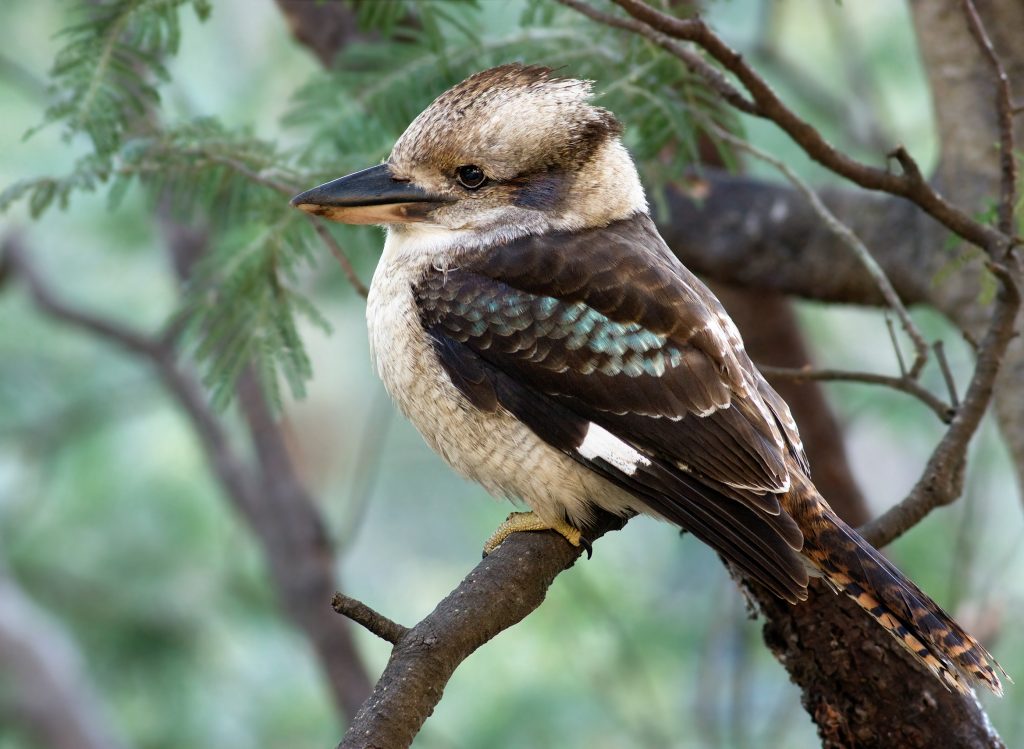
- Scientific name: Dacelo novaeguineae
- Family: Alcedinidae
- Habitat: Eastern and southeastern Australia, in eucalypt forests, woodlands, and urban areas
- Conservation status: Least Concern
The Laughing Kookaburra is the largest species within the kingfisher family, Alcedinidae. It is known for its iconic “laughing” call, resembling human laughter.
With a stocky build, large head, and robust bill, this Australian woodland bird is carnivorous, feeding on various prey such as insects, small mammals, reptiles, and other birds.
Laughing Kookaburras are territorial creatures often found in family groups, engaging in cooperative breeding with offspring from previous years assisting in raising new chicks.
5. Tasmanian Devil
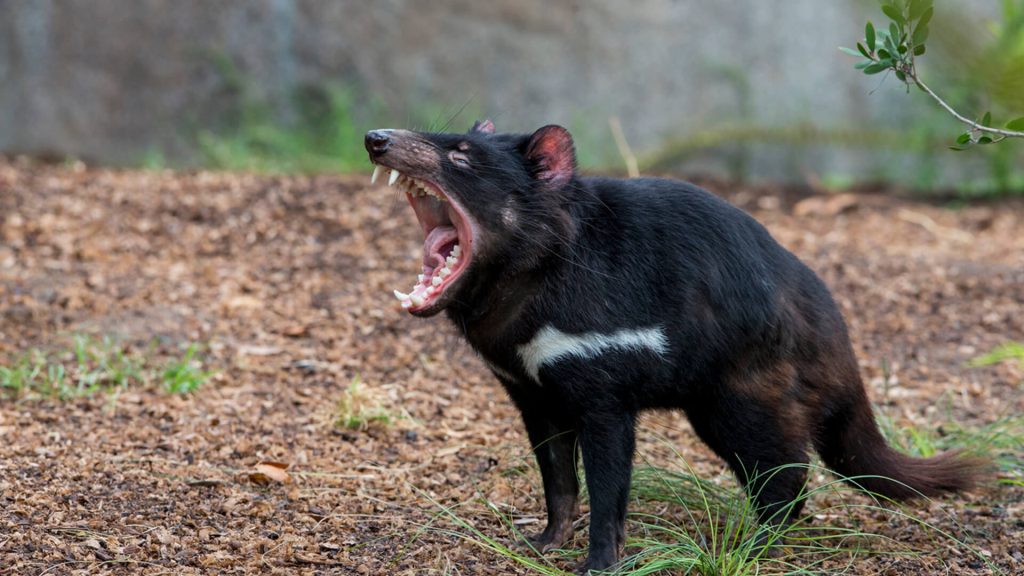
- Scientific name: Sarcophilus harrisii
- Family: Dasyuridae
- Habitat: Tasmania
- Conservation status: Endangered
The Tasmanian Devil is a small, nocturnal carnivorous marsupial known for its ferocious behavior and powerful bite. It possesses a muscular build, black fur, and a distinctive white marking on its chest.
Primarily scavengers, Tasmanian Devils feed on carrion, but they also hunt small mammals, birds, and reptiles. They are currently endangered due to a contagious facial tumor disease that has significantly impacted their population.
